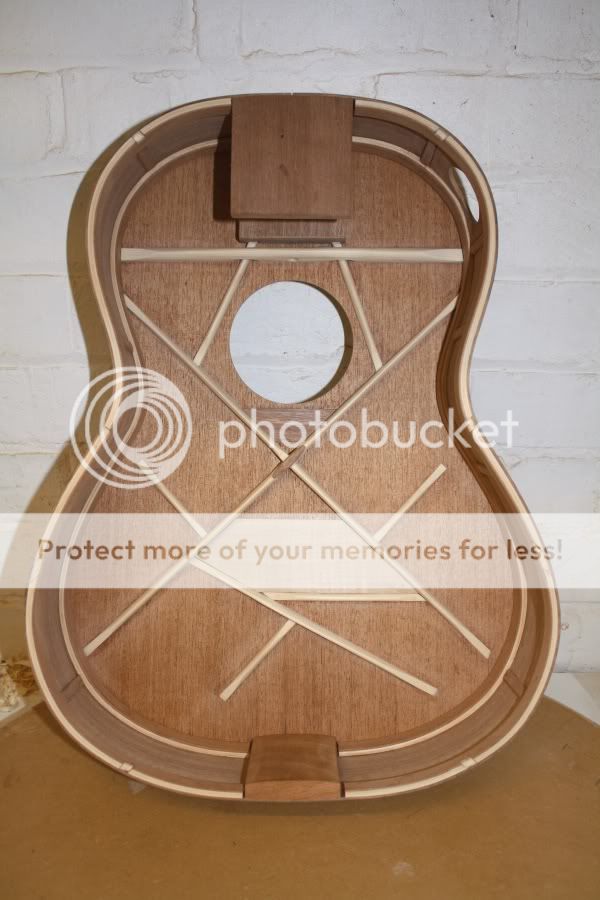I've been using the A-frame design for some time now. I have a few guitars with that feature that live on the road, and the owners tell me they are way more stable than anything without the A-frame. One of these guys uses about ten different tunings, and switches several times in a set, with no problems.
Except for the first few that I did I've inletted the upper ends of the A-braces. I've had two of those come back for work. One was a 12-string that got knocked off a table, and hit head first. The A-brace was not fully butted up against the block. The top crackd along the sides of the fingerboard, and the neck shifted in until it hit the braces. I elected to replace the top and do it right. The second, and OM, has had a particularly hard life, and the owner brought it back in to have me fix a hole he'd punched in the side when he walked into a door frame. Judging by the amount of white paint on the sides, it was far from the first time. The neck has held up on that one, and it looks as though it got properly butted. It does not take much of a gap to allow the neck to shift, and it doesn't have to shift much to be a problem. Inletting it greatly increases the chances that you'll have proper contact.
Even with a UTB, there is still some down force on the top above the sound hole, and this will tend to peel the upper ends of the A-braces loose unless they're inletted. Any time you put a stress on an object, you get a 'strain': a displacement of some sort. When you tighten a string to bring it up to pitch it gets longer, and when you stand on a floor, it sags a little. You mght not see the sag, but the down force of the neck does push the middle of the UTB down a bit, and that shifts some of the load onto the A-frame and the top. Being stiffer, the A-frame doesn't bend as much as the top does, so there's a peeling stress set up in the glue line. That's why you inlet things; to keep them from peeling loose.
|



![Mad [headinwall]](./images/smilies/headbangwalluf8.gif)